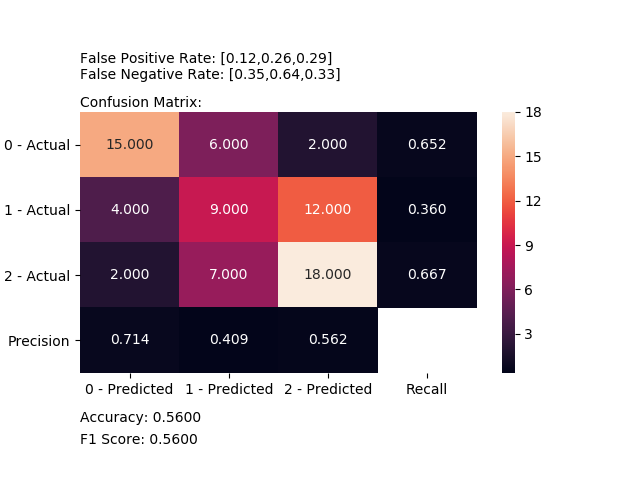This project is an ensemble of methods which are frequently used in python Data Science projects.
Project description
Data Science Utils: Frequently Used Methods for Data Science
Data Science Utils extends the Scikit-Learn API and Matplotlib API to provide simple methods that simplify task and visualization over data.
Code Examples and Documentation
Let's see some code examples and outputs.
You can read the full documentation with all the code examples from: https://datascienceutils.readthedocs.io/en/latest/
In the documentation you can find more methods and more examples.
Plot Confusion Matrix
In following example we are going to use the iris dataset from scikit-learn. so firstly let's import it:
import numpy
from sklearn import datasets
IRIS = datasets.load_iris()
RANDOM_STATE = numpy.random.RandomState(0)
Let's train a SVM classifier on all the target labels and plot confusion matrix:
from matplotlib import pyplot
from sklearn.model_selection import train_test_split
from sklearn.multiclass import OneVsRestClassifier
from sklearn import svm
from ds_utils.metrics import plot_confusion_matrix
x = IRIS.data
y = IRIS.target
x_train, x_test, y_train, y_test = train_test_split(x, y, test_size=.5, random_state=RANDOM_STATE)
# Create a simple classifier
classifier = OneVsRestClassifier(svm.LinearSVC(random_state=RANDOM_STATE))
classifier.fit(x_train, y_train)
y_pred = classifier.predict(x_test)
plot_confusion_matrix(y_test, y_pred, [0, 1, 2])
pyplot.show()
And the following image will be shown:
Generate Decision Paths
We'll create a simple decision tree classifier and print it:
from sklearn.tree import DecisionTreeClassifier
from ds_utils.visualization_aids import generate_decision_paths
x = IRIS.data
y = IRIS.target
# Create decision tree classifier object
clf = DecisionTreeClassifier(random_state=RANDOM_STATE, max_depth=3)
# Train model
clf.fit(x, y)
print(generate_decision_paths(clf, iris.feature_names, iris.target_names.tolist(),
"iris_tree"))
The following text will be printed:
def iris_tree(petal width (cm), petal length (cm)):
if petal width (cm) <= 0.8000:
# return class setosa with probability 0.9804
return ("setosa", 0.9804)
else: # if petal width (cm) > 0.8000
if petal width (cm) <= 1.7500:
if petal length (cm) <= 4.9500:
# return class versicolor with probability 0.9792
return ("versicolor", 0.9792)
else: # if petal length (cm) > 4.9500
# return class virginica with probability 0.6667
return ("virginica", 0.6667)
else: # if petal width (cm) > 1.7500
if petal length (cm) <= 4.8500:
# return class virginica with probability 0.6667
return ("virginica", 0.6667)
else: # if petal length (cm) > 4.8500
# return class virginica with probability 0.9773
return ("virginica", 0.9773)
Extract Significant Terms from Subset
This method will help extract the significant terms that will differentiate between subset of documents from the full corpus. Based on the elasticsearch significant_text aggregation.
import pandas
from ds_utils.strings import extract_significant_terms_from_subset
corpus = ['This is the first document.', 'This document is the second document.',
'And this is the third one.', 'Is this the first document?']
data_frame = pandas.DataFrame(corpus, columns=["content"])
# Let's differentiate between the last two documents from the full corpus
subset_data_frame = data_frame[data_frame.index > 1]
terms = extract_significant_terms_from_subset(data_frame, subset_data_frame,
"content")
And the following table will be the output for terms:
| third | one | and | this | the | is | first | document | second |
|---|---|---|---|---|---|---|---|---|
| 1.0 | 1.0 | 1.0 | 0.67 | 0.67 | 0.67 | 0.5 | 0.25 | 0.0 |
Excited?
Read about all the modules here and see more methods and abilities (such as drawing a decision tree and more):
- Metrics - The module of metrics contains methods that help to calculate and/or visualize evaluation performance of an algorithm.
- Preprocess - The module of preprocess contains methods that are processes that could be made to data before training.
- Strings - The module of strings contains methods that help manipulate and process strings in a dataframe.
- Visualization Aids - The module of visualization aids contains methods that visualize by drawing or printing ML output.
Contributing
Interested in contributing to Data Science Utils? Great! You're welcome, and we would love to have you. We follow the Python Software Foundation Code of Conduct and Matplotlib Usage Guide.
No matter your level of technical skill, you can be helpful. We appreciate bug reports, user testing, feature requests, bug fixes, product enhancements, and documentation improvements.
Thank you for your contributions!
Find a Bug?
Check if there's already an open issue on the topic. If needed, file an issue.
Open Source
Data Science Utils license is MIT License.
Installing Data Science Utils
Data Science Utils is compatible with Python 3.6 or later. The simplest way to install Data Science Utils and its dependencies is from PyPI with pip, Python's preferred package installer:
pip install data-science-utils
Note that this package is an active project and routinely publishes new releases with more methods. In order to upgrade Data Science Utils to the latest version, use pip as follows:
pip install -U data-science-utils
Alternatively you can install from source by cloning the repo and running:
git clone https://github.com/idanmoradarthas/DataScienceUtils.git
cd DataScienceUtils
python setup.py install
Or install using pip from source:
pip install git+https://github.com/idanmoradarthas/DataScienceUtils.git
If you're using Anaconda, you can install using conda:
conda install -c idanmorad data-science-utils
Project details
Release history Release notifications | RSS feed
Download files
Download the file for your platform. If you're not sure which to choose, learn more about installing packages.
Source Distribution
Built Distribution
Hashes for data_science_utils-1.5-py3-none-any.whl
| Algorithm | Hash digest | |
|---|---|---|
| SHA256 | 2b014e618a545689d2fad45a28ee56158f66cc5f9a138b24cd5ba14e0a22e25d |
|
| MD5 | d60d5dbf777cf5ce623ad392d7f2bd53 |
|
| BLAKE2b-256 | faea3baefd84972f333b723dc4197a65ee6936d1a77209ca07819e2e88542e23 |






















